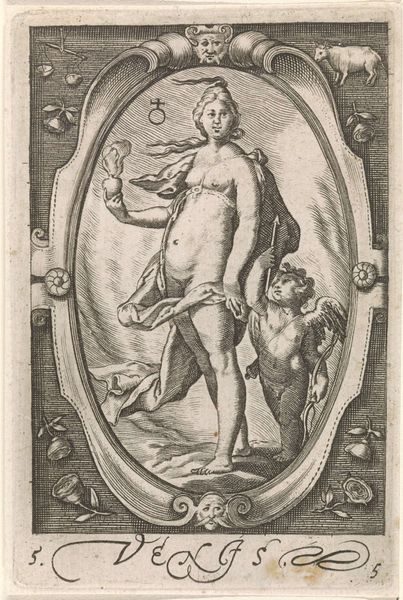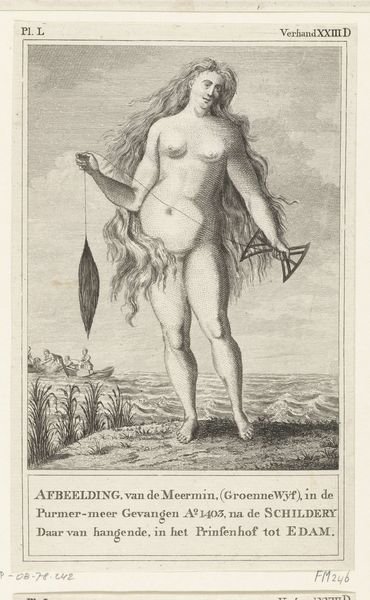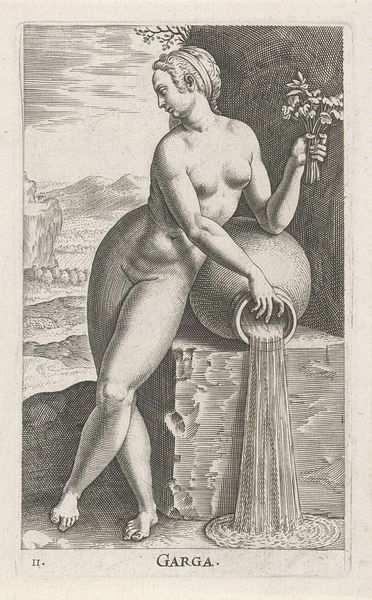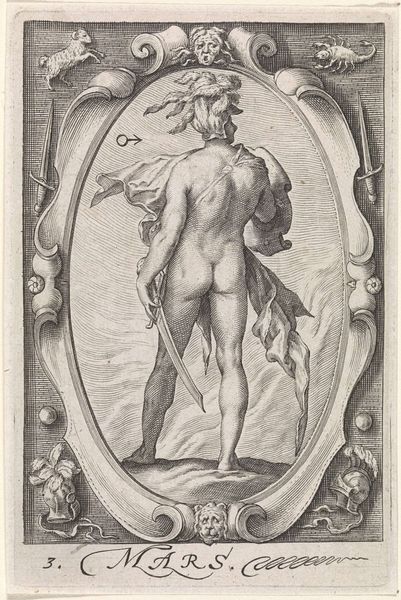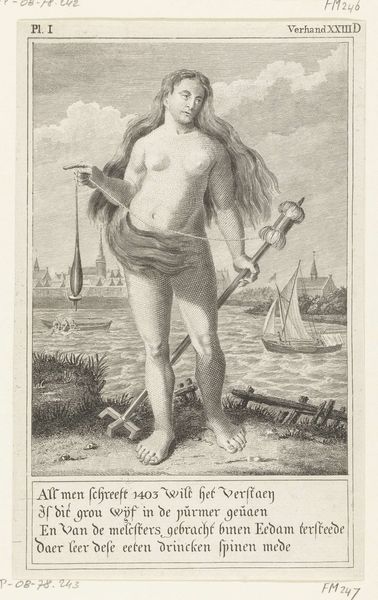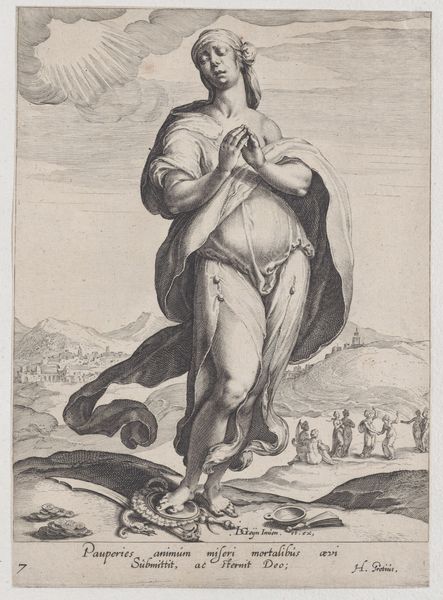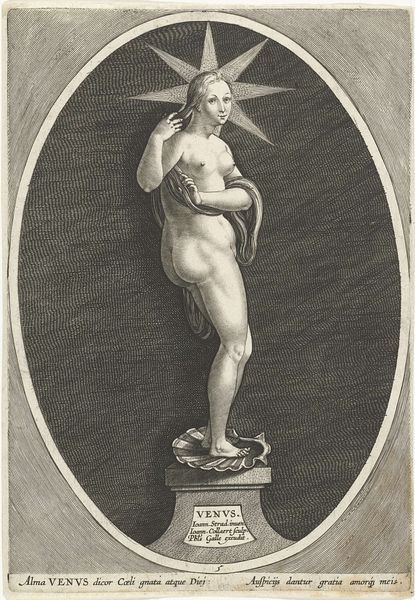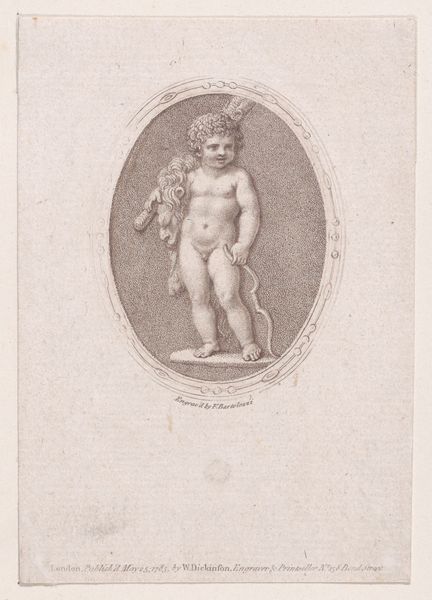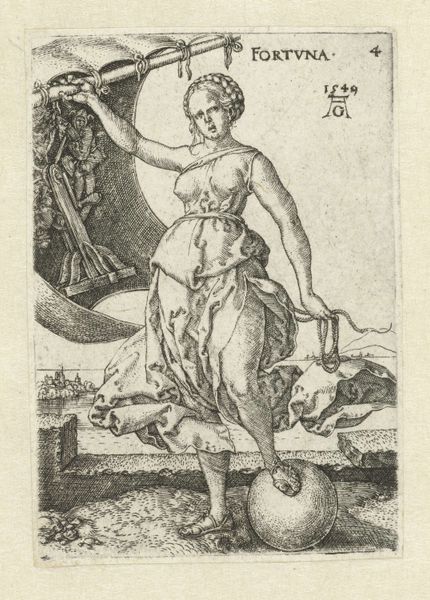
print, engraving
#
portrait
#
allegory
#
baroque
# print
#
old engraving style
#
figuration
#
line
#
nude
#
engraving
Dimensions: height 56 mm, width 38 mm
Copyright: Rijks Museum: Open Domain
Editor: Here we have an engraving called "Veritas" from around the 17th century, currently residing in the Rijksmuseum. It’s an allegorical nude figure holding a mirror. The level of detail, particularly in the rendering of the landscape, strikes me. How do we interpret this image within its historical context? Curator: That's a crucial question. In the 17th century, engravings like this circulated widely, contributing to visual culture. Consider the role of "Veritas," truth, in a period marked by religious and political conflict. The nude figure is not just aesthetic; it's a deliberate choice, connecting to classical ideas of truth as unveiled. But why make truth female? Editor: Perhaps because truth was considered something to be revealed or discovered, which might be seen as a more traditionally feminine role at the time? And how does the mirror factor in? Curator: The mirror is key. It suggests that truth requires reflection, a careful examination. Who gets to decide what constitutes "truth," and whose reflection is valued? Furthermore, who was the intended audience for this print? Was it aimed at a scholarly elite or a wider public eager for accessible allegories? Editor: So, it's not just a representation of truth, but also a commentary on the accessibility and interpretation of it, potentially serving various political purposes. Curator: Precisely. The very act of creating and disseminating this image participates in shaping public understanding of complex ideas. Look at where it's located—within an oval frame, literally containing the message, controlled and mediated for consumption. Editor: That really makes you think about the power dynamics inherent in art production and its consumption at the time. Thanks; that helps me see so much more in this piece. Curator: Absolutely. By understanding the print's circulation and reception, we begin to grasp the cultural work it performs beyond its surface imagery.
Comments
No comments
Be the first to comment and join the conversation on the ultimate creative platform.

